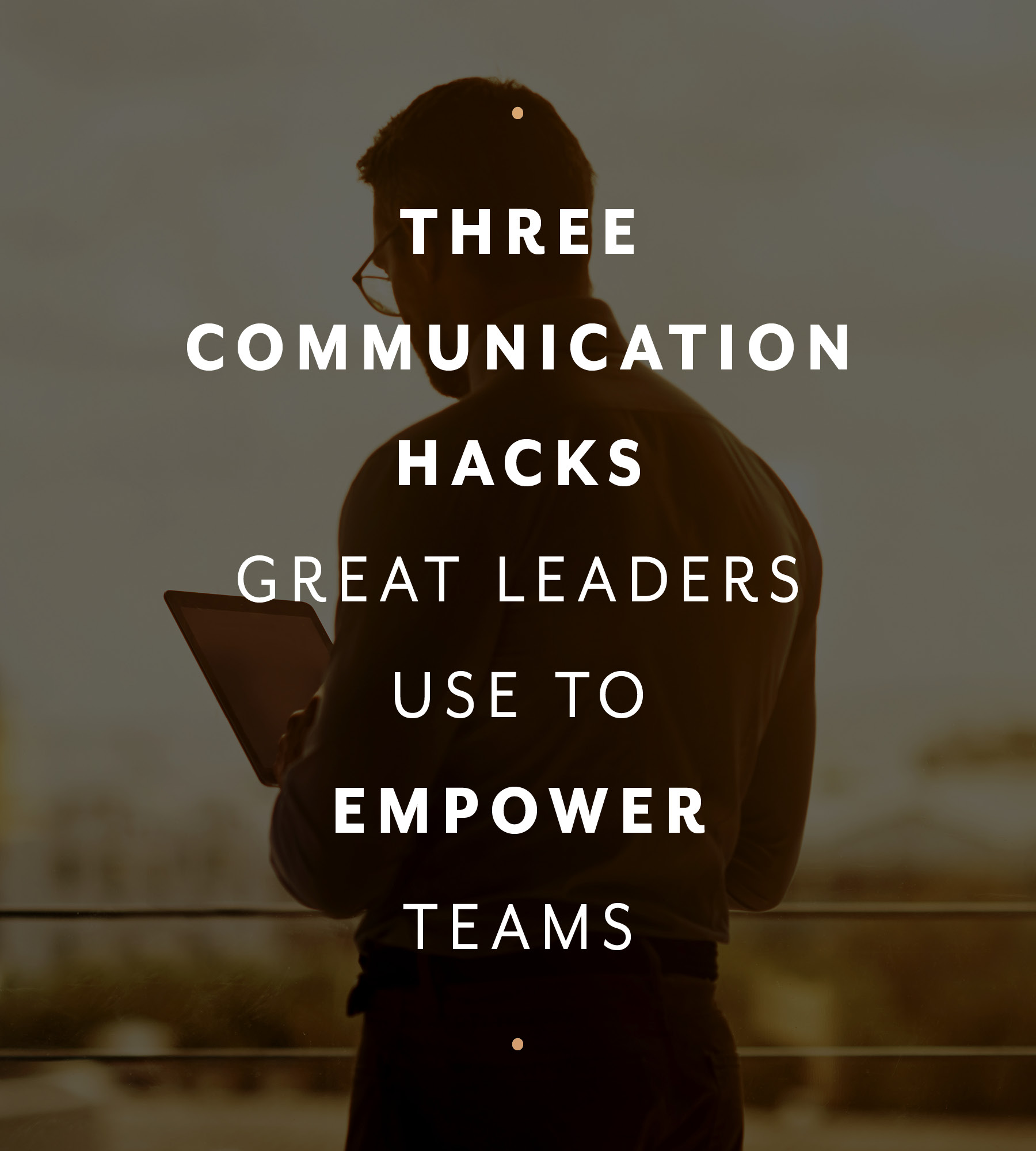Language
You can read the magazine in one of the following languages
Great leadership requires great communication.
It’s as simple as that. You will never excel at leadership without this most fundamental of human skills, no matter how intellectually intelligent, educated or technically brilliant you are.
The success of your leadership depends on your ability to get the best out of your people, because people drive performance. Communication is key: it underpins all relationships and is the foundation of a high-performing team and a thriving culture.
True leadership goes way beyond just managing tasks, systems and processes; it’s about connecting with your people and leading in a way they genuinely want to follow, especially when the going gets tough.

What does good communication look like as a leader? It can be distilled into three key elements: clarity, curiosity and kindness.
To create that connection, your communication has to motivate, encourage, empower – and yes, challenge. Good communication and effective leadership are inseparable.
It’s not only about talking the talk; it’s about walking the walk too. Mastering your emotions, navigating difficult conversations and understanding the emotional landscape of others are crucial components. Simply having a leadership title doesn’t automatically make you a leader in practice.
As British wartime Prime Minister Winston Churchill is quoted as saying, “The difference between mere management and leadership is communication.”
So what does good communication look like as a leader? It can be distilled into three key elements: clarity, curiosity and kindness.
Clarity is the bedrock of effective leadership communication. It involves clearly articulating the direction, vision and priorities of the team and explaining the ‘why’ behind decisions. It also requires defining roles, tasks and expectations for both performance and behavior.
This clarity about what ‘done well’ looks like sets your people up for success and allows you to hold them accountable if they miss the mark. Feedback is the secret sauce here. Share it early, often and clearly with the intention of helping someone learn, improve and develop.

Clarity is the bedrock of effective leadership communication.
Clear communication also means embracing ‘plain speech’. Keep your communication simple, authentic and transparent. Transparency goes beyond honesty; it involves sharing the truth that you believe needs to be known without being asked because it’s the right thing to do.
Even if people don’t like your message, if they understand what it is, why it’s needed and have it delivered in a frank, proactive and empathetic way, they are more likely to get on board.
Being curious is a communication and leadership superpower. It builds trust with your team and plays a pivotal role in fueling innovation, challenging the status quo and seeking improvement. Curiosity begins with a genuine desire to understand and the humility to accept that you don’t know it all.
It transforms you into a skilled communicator who asks thought-provoking questions, seeks to understand other perspectives even if you disagree, and welcomes diversity of opinion. When you are curious, you see feedback as information rather than an attack.

Curiosity begins with a genuine desire to understand and the humility to accept that you don’t know it all.
You’re more likely to explore why your team members react in certain ways to change or challenges and to consider their emotions, feelings, fears and concerns.
This deeper understanding of and empathy for your people allows you to respond calmly rather than react emotionally under pressure – you get curious, not furious.
When leaders ask more questions and show genuine interest in their team members as individuals, not just employees, they also foster stronger connections and build trust and respect. Put simply: the more you know and understand your people and their motivations and drivers, the better you can lead them.
Kind communication isn’t soft and fluffy, and it doesn’t mean being a pushover. It means being both clear and compassionate in your communication and balancing empathy with accountability.
Whether you’re giving praise, offering constructive feedback or breaking tough news, leaders should do so with humanity, warmth and care. This involves putting yourself in the other person’s shoes and remembering that you’re dealing with a human who has feelings and emotions, even if they’ve made a mistake.
It’s a misconception that kindness means avoiding hard conversations. In fact, it means the opposite. Kindness is having challenging conversations early in a way that is both direct and understanding. It is giving people the information they need to succeed, even when it’s tough to hear.

Kindness is having challenging conversations early in a way that is both direct and understanding.
Consideration is also part of communicating with kindness. It involves thinking before you speak, not just about the words you use but how you say them – your tone, body language, timing and delivery method.
It’s being aware of the impact of your message on the receiver and tailoring your communication so it has the best chance of being received.
If you want to be a great leader, focus on continuously improving your communication skills. Keep it clear, stay curious and be kind – a winning combination for building connections, inspiring your people and steering your team through any storm you may face.

Leah Mether
Contributor Collective Member
Leah Mether is a speaker, trainer, facilitator and author known for her direct, enthusiastic and relatable style. With a background in leadership, corporate communications and journalism, Leah works to help leaders and teams improve their communication and self-management. Her clients represent a diverse range of industries, government agencies and businesses across Australia – including AGL, Optus, CFA, Energy Australia, Latrobe Community Health Services and the Department of Energy, Environment and Climate Action. As a proud Gippslander based in regional Victoria, Leah is passionate about supporting communities through industry transition. For more information visit https://www.leahmether.com.au/
